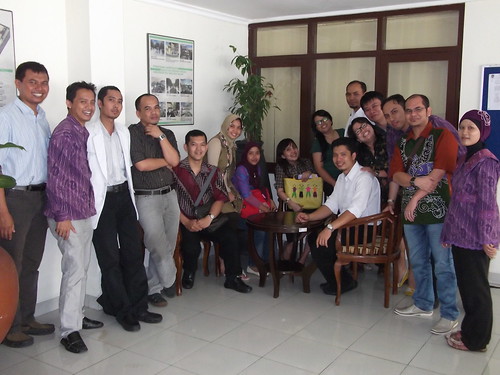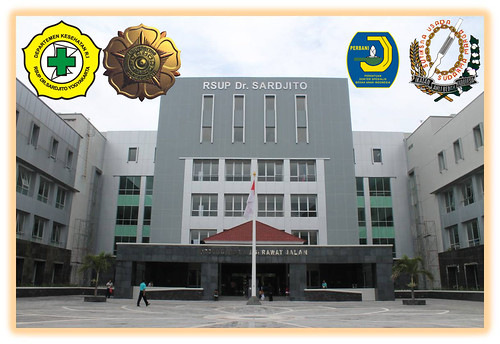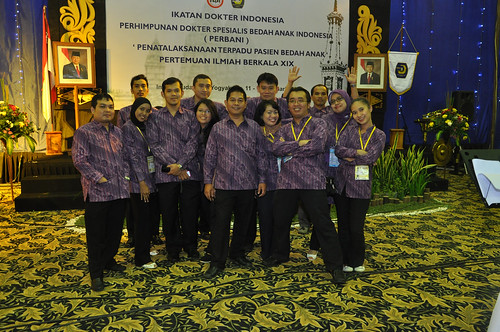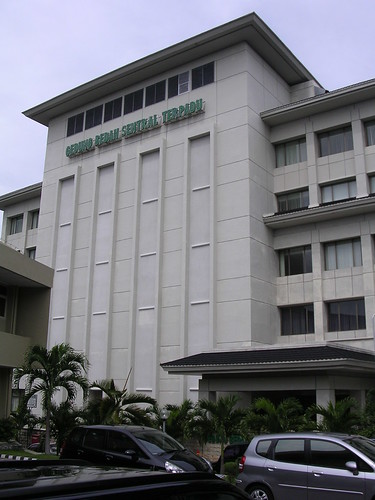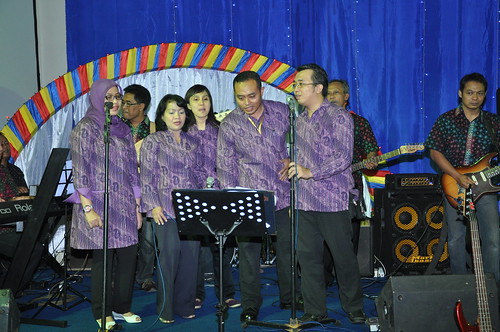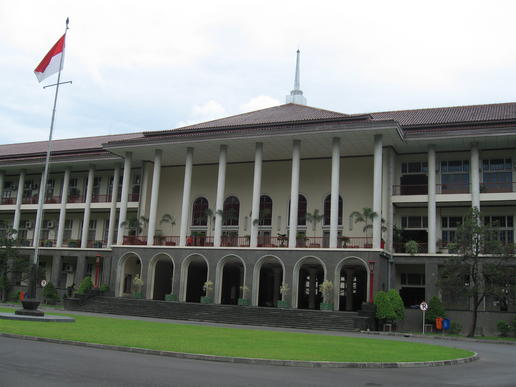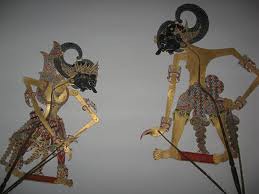RSUP Dr Sardjito
Blog residen bedah anak UGM sebagai wahana komunikasi ilmiah dan nyantai antar residen dan juga dengan masyarakat.
Bedah Anak UGM
Blog residen bedah anak UGM sebagai wahana komunikasi ilmiah dan nyantai antar residen dan juga dengan masyarakat.
Bedah Anak UGM
Blog residen bedah anak UGM sebagai wahana komunikasi ilmiah dan nyantai antar residen dan juga dengan masyarakat.
Gedung Bedah sentral
Disinilah kawah candradimuka kami........
Bedah Anak UGM
Mari....beryanyi......
Bedah Anak UGM
Terima kasih.....
Keindahan
Blog residen bedah anak UGM sebagai wahana komunikasi ilmiah dan nyantai antar residen dan juga dengan masyarakat.
Merapi
Keindahan dan Kewaspadaan....
Terima kasih kami
Terima kasih kepada seluruh guru kami...
Kantor pusat UGM
Disinilah Urusan kami....
Tuesday, July 30, 2013
Pertemuan ilmiah disingapura
Medio Juli 2013 Bedah
Anak FK UGM di bawah bimbingan DR.Dr.
Rochadi, SpB, SpBA(K) mengirim 4 utusan (residen) sebagai delegasi dalam
acara 19th Asian Congress of Surgery and
1st SingHealth Surgical Congress yang berlangsung di Academia, Singapore
General Hospital. Pada acara yang berlangsung pada 18-23 Juli 2013 tersebut
masing-masing residen turut mempresentasikan karya ilmiah dalam bentuk poster. Adapun nama
residen beserta judul makalah yang dibawakan adalah :
1.
Dr. D.A. Teddy Soemijarto
Evaluation
of Separation of Ischiopagustetrapus Conjoint Twins in Sardjito Hospital,
Yogyakarta, Indonesia
2.
Dr. Willy Hardy Marpaung
Prognostic Factors Affecting
Constipation in Anorectal Malformation in Yogyakarta, Indonesia
3.
Dr. Padli
Giant Mackel’s Diverticulum
4.
Dr. Yhohan Z. Thaihutu
Obstruction
on Omphalocele with Beckwith-Wiedemann Syndrome
Pada momen ilmiah
internasional ini, ternyata presentasi
ilmiah dari Indonesia hanya terwakili oleh 4 karya ilmiah residen tersebut. Meskipun demikian, hal
ini disambut antusias dan rasa bangga dari perwakilan Faculty Meeting untuk Indonesia sekaligus ketua IKABI saat ini
yaitu Prof. DR. Dr. Paul L.
Tahalele, SpB, SpBTKV. Amanat beliau supaya momen semacam ini dijadikan trigger dimasa
datang agar lebih banyak makalah atau presentasi karya ilmiah bedah di kancah internasional yang
diikuti oleh residen (bedah) dari Indonesia.
Friday, July 26, 2013
bayi muntah hijau,bahayakah?
Wednesday, July 24, 2013
Saturday, July 20, 2013
Saturday, July 13, 2013
Usus buntu mestikah dioperasi?
Appendicitis
Appendicitis is an inflammation of the appendix, a 3 1/2-inch-long tube of tissue that extends from the large intestine. No one is absolutely certain what the function of the appendix is. One thing we do know: We can live without it, without apparent consequences.
Appendicitis is a medical emergency that requires prompt surgery to remove the appendix. Left untreated, an inflamed appendix will eventually burst, or perforate, spilling infectious materials into the abdominal cavity. This can lead to peritonitis, a serious inflammation of the abdominal cavity's lining (the peritoneum) that can be fatal unless it is treated quickly with strong antibiotics.
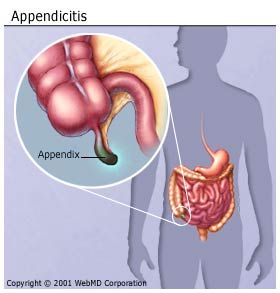
Sometimes a pus-filled abscess (infection that is walled off from the rest of the body) forms outside the inflamed appendix. Scar tissue then "walls off" the appendix from the rest of the abdomen, preventing infection from spreading. An abscessed appendix is a less urgent situation, but unfortunately, it can't be identified without surgery. For this reason, all cases of appendicitis are treated as emergencies, requiring surgery.
In the U.S., one in 15 people will get appendicitis. Although it can strike at any age, appendicitis is rare under age 2 and most common between ages 10 and 30.
What Causes Appendicitis?
Appendicitis occurs when the appendix becomes blocked, often by stool, a foreign body, or cancer. Blockage may also occur from infection, since the appendix swells in response to any infection in the body.
What Are the Symptoms of Appendicitis?
The classic symptoms of appendicitis include:
- Dull pain near the navel or the upper abdomen that becomes sharp as it moves to the lower right abdomen. This is usually the first sign.
- Loss of appetite
- Nausea and/or vomiting soon after abdominal pain begins
- Abdominal swelling
- Fever of 99-102 degrees Fahrenheit
- Inability to pass gas
- Dull or sharp pain anywhere in the upper or lower abdomen, back, or rectum
- Painful urination
- Vomiting that precedes the abdominal pain
- Severe cramps
- Constipation or diarrhea with gas
How Is Appendicitis Diagnosed?
Diagnosing appendicitis can be tricky. Symptoms of appendicitis are frequently vague or extremely similar to other ailments, including gallbladder problems, bladder or urinary tract infection, Crohn's disease, gastritis, intestinal infection, and ovary problems.
The following tests are usually used to make the diagnosis.
- Abdominal exam to detect inflammation
- Urine test to rule out a urinary tract infection
- Rectal exam
- Blood test to see if your body is fighting infection
- CT scans and/or ultrasound
Surgery to remove the appendix, which is called an appendectomy, is the standard treatment for appendicitis.
If appendicitis is even suspected, doctors tend to err on the side of safety and quickly remove the appendix to avoid its rupture. If the appendix has formed an abscess, you may have two procedures: one to drain the abscess of pus and fluid, and a later one to remove the appendix.
Appendectomy: What to Expect
Antibiotics are given before an appendectomy to fight possible peritonitis. General anesthesia is usually given, and the appendix is removed through a 4-inch incision or by laparoscopy. If you have peritonitis, the abdomen is also irrigated and drained of pus.Within 12 hours of surgery you may get up and move around. You can usually return to normal activities in two to three weeks. If surgery is done with a laparoscope (a thin telescope-like instrument for viewing inside the abdomen), the incision is smaller and recovery is faster.
After an appendectomy, call your doctor if you have:
- Uncontrolled vomiting
- Increased pain in your abdomen
- Dizziness/feelings of faintness
- Blood in your vomit or urine
- Increased pain and redness in your incision
- Fever
- Pus in the wound
There is no way to prevent appendicitis. However, appendicitis is less common in people who eat foods high in fiber, such as fresh fruits and vegetables.
http://www.webmd.com/digestive-disorders/digestive-diseases-appendicitis
